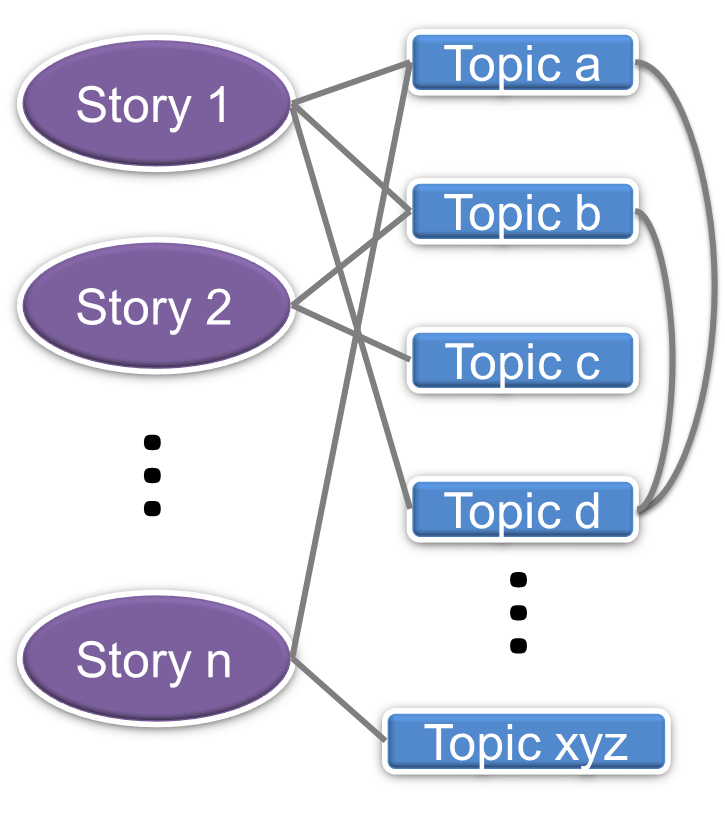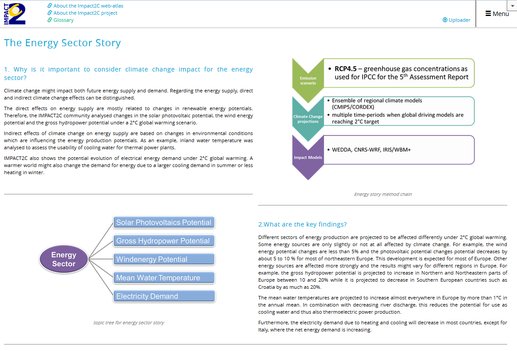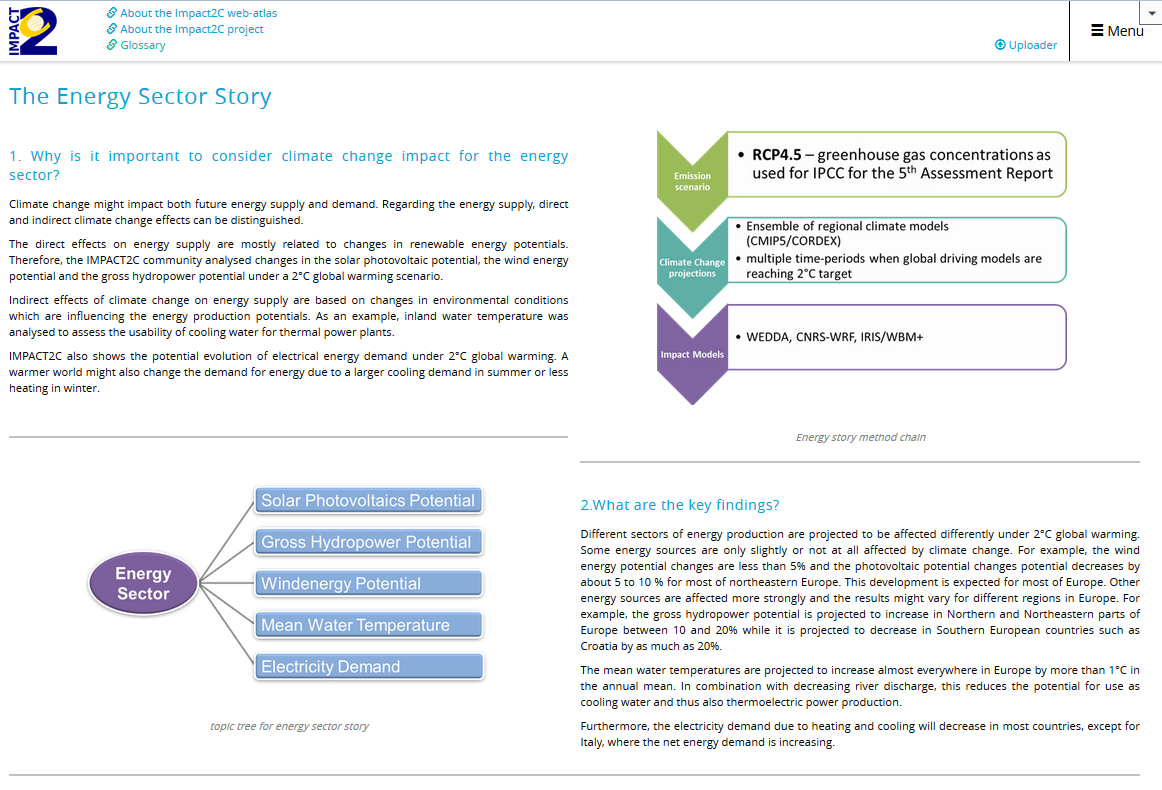Storyline Concept
Presenting the findings of the interdisciplinary research approach in IMPACT2C is challenging, when besides displaying the individual research results, the various connections of the individual aspects within and across different sectors should be demonstrated. For this purpose, the storyline concept was developed that allows presenting the findings within single stories or sectors but also facilitates the cross-referencing to other thematic areas. In its current version the atlas consists of several major stories for the pan-European region: Climate; Energy; Health; Agriculture, Forestry and Ecosystems; Water; Tourism; and Coastal Themes. An additional story focuses on the most vulnerable regions of the globe (Non-European Hotspots). It is planned to extend the atlas by further stories in the near future.
Within each story several topics are clustered, such as projected changes in snow season length, changes in future energy demand or possible changes in the number of overnight stays at risk. Single topics can be relevant for multiple stories, and are therefore frequently linked to more than one story. The concept of stories, topics and cross-referencing is depicted in principle of story tree. An overview of all stories and topics is available via the navigation of the web-atlas.
Overview of each story
In the web-atlas, an overview page introduces each story. Here, all topics of a specific story are connected. The overviews are structured around the following two questions:
- Why is it important to consider climate change impact for the specific sector?
- What are the key findings?
In order to get an overview of the story and the connected topics, a story-tree is shown for each story as well as its methodological pathway applied to assess the projected impacts presented within the story. An example for an overview page including the story-tree and the methodological pathways is presented in the Figure left.



